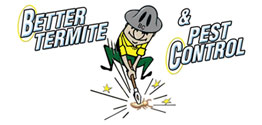There are over 50 termite species in the US, and 20 of these pose a threat to residential areas. However, of these 20, three are much more common than the rest of them. These three species are the subterranean, drywood and dampwood termites. Let’s take a look at each of them and see what sets them apart.
Subterranean termites
Subterranean termites are by far the most destructive termite species in the US. This is because they have one major advantage – they build their colonies underground. Underground colonies can grow as large as they want, and when they are big enough, they can deploy thousands of workers at once to consume a piece of wood.
Being underground also protects them from more straightforward treatment methods such as direct application insecticides, and more ingenious approaches are needed to stop an infestation. To treat a subterranean termite infestation, a pro will need to either install a chemical barrier, which is a termiticide that is injected in the ground around the home, or install a baiting system, which consists of several containers that are installed in shallow holes in the ground and which contain bait laced with a slow acting poison.
Drywood termites
Drywood termites will build their colonies inside the wood that they consume. This means that it can take a long time for an infestation to grow, but once it gets large enough, it’s more difficult to remove. Drywood termites also go for wood that is low in moisture content, and since the wood does not have to be connected to the home, they can infest any part of the building from the roof to the foundation. When it comes to control, drywood termites are treated using either direct application insecticides, or fumigation in cases where the infestation is widespread.
Dampwood termites
Dampwood and drywood termites are very similar. Both species will build their colonies inside wood, but as their names suggest, they prefer different types of wood, with dampwood termites going for wood that has elevated moisture content. Of the three species, dampwood termite infestations are the rarest, but they can cause extensive damage in the home, because they will spread from moist wood to dry wood as the colony grows. These termites are controlled with the same methods as drywood termites.
Contact us today if you would like to know more about these three species, or if you suspect that you currently have an infestation in your home.



